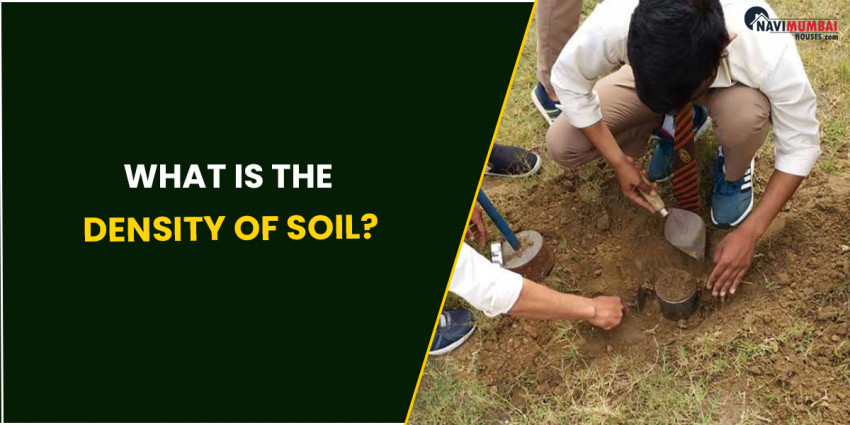
The relationship between the mass and volume of dry soil is defined by soil density.
Soil density, a term familiar to all anthophiles, is a critical component of plant growth. Soil density is the relationship between the mass and volume of a dry soil sample. It is measured in terms of grammes per cubic centimetre or kilogrammes per cubic metre.
Density (D) = Mass (M)/Volume (V) gm/cc or pound/cubic foot
The soil must have access to air, water, and nutrients, and soil density varies from plant to plant. It determines a variety of factors such as the plant's growth rate, appearance, height and width, colour, and so on.
Constituents of soil density
Soil density is an umbrella term in botany that refers to two distinct concepts.
Are you looking flat for sale in kharghar?
Density of particles
Particle density is defined as the weight per unit volume of the solid portion of the soil. It is measured in grammes per cubic centimetre or pounds per cubic foot. The accumulative densities of the soil's individual inorganic and organic constituents determine it. True density is another name for it.
In most soils, the particle density is 2.65 gm/cc.
The amount of heavy minerals in the soil, such as magnetite, limonite, hematite, zircon, and so on, also influences particle density. As the amount of organic matter in the soil increases, particle density decreases. When particle density is divided by the density of water, a relative weight number known as specific gravity is obtained.
Density of the bulk
Bulk density is defined as the amount of mass per unit volume of dry soil, which includes the volume of pores, spaces, and solids. It is measured in grammes per cubic metre, pounds per cubic foot, or megagrams per cubic metre. The bulk density of soil is always less than its particle density. The weight per volume of loose and porous soils is greater than that of compact soil.
Soils with low and high bulk densities typically exhibit favourable and unfavourable physical conditions, respectively. Bulking density in normal soils typically ranges from 1-1.6 gm/cc, with the exception of very compact subsoils, which have a bulking density of 2gm/cc.
Soils with a high sand content have a bulk density of about 1.7 gm/cc, whereas organic peat soils have a bulk density of 0.5 gm/cc. Bulk density decreases as the texture of minerals becomes finer, and it is more important than physical density in understanding the importance of soil in plants.
Factors influencing bulk density
• Pore space measurement.
• The soil's stiffness.
• The surface texture of the soil.
• Content of organic matter.
• The soil structure.
Furthermore, porosity is a commonly used term. It is the volume of pores in a collected soil sample divided by the total volume of the sample.
Mathematically;
Porosity is defined as the volume of pores divided by the total volume of soil.
An Uhland sampler is used to collect and examine specimens in order to determine these quantities. It has a cylindrical structure that is inserted into the soil at a medium depth where the roots can be found. It is then removed along with a sample of the soil being examined.
After the cylinder is removed, the soil is allowed to dry before being placed in an oven at 105 degrees Celsius to determine its mass. The volume of the sample is calculated using the diameter and height.
Soil density: Compaction of soil
Soil compaction is another botanical term related to soil density. Soil pore space and pore density are typically reduced as the soil becomes more compact. This leaves less room for water and air to pass through.
Bulk density indicates soil compaction. The way soil is managed affects its density, but the effects are still primarily determined by the texture.
Tillage affects soil density.
The impact of soil management on density is relatively limited. Tillage is one of the most direct influences on soil density. Tillage is simply the term for the process of tilting the soil.
Turning the soil physically breaks it up, making more room for airflow and water. It can also aid in the removal of crop residues, making planting easier. Furthermore, tillage warms the soil faster in the spring, causing the plant to grow faster.
Tillage affects soil density.
The impact of soil management on density is relatively limited. Tillage is one of the most direct influences on soil density. Tillage is simply the term for the process of tilting the soil.
Turning the soil physically breaks it up, making more room for airflow and water. It can also aid in the removal of crop residues, making planting easier. Furthermore, tillage warms the soil faster in the spring, causing the plant to grow faster.
Source From:- navimumbaihouses






